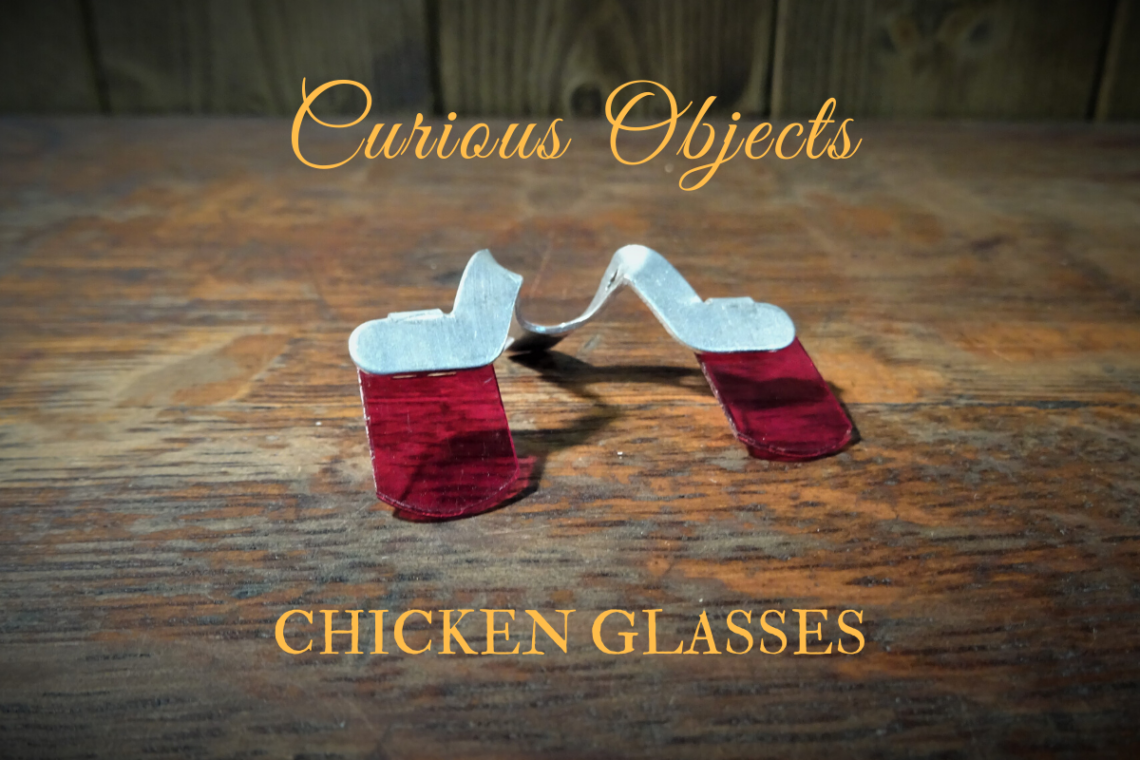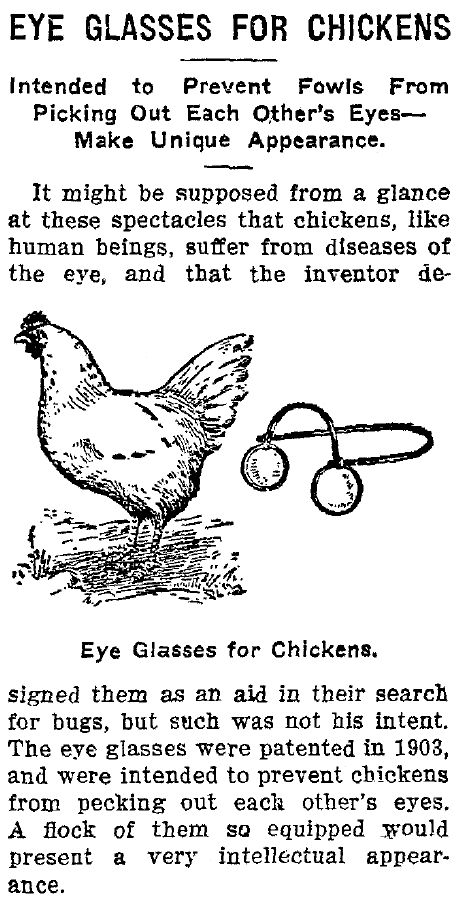
Curious Objects: Chicken Glasses
One of the most interesting aspects of running my curiosity shop is finding and learning about objects that I never knew existed. It’s not unknown for me to buy something without knowing what it is and having to research the possibilities later. I thought this would make an interesting category for my blogs. So here’s the first: Chicken Glasses, the strange invention made to cure cannibalistic behaviour in chickens.
Rather than the quirky gimmick they appear to be, chicken glasses were invented to stop chickens pecking each other. Apparently, hens are not fussy about their food. Being omnivores, chickens are partial to meat now and again. However, when they’re stressed, they don’t worry about where it comes from!
Why Chicken Glasses were Invented
At the turn of the 20th century, farmers in the USA were having problems with their hens. They found that cannibalistic behaviour in their hens was resulting in a decrease of egg production, poor health and even the death of up to 5 per cent of their birds. Strangely, chickens are attracted to the sight of blood and peck at it. Gradually more chickens would join in and this could go on until the unfortunate injured bird is dead.
So, chicken glasses were invented, just after the turn of the 20th century, to stop this strange behaviour. Simply, the rose coloured lenses prevented the birds from seeing the blood, and so would not feel the attraction to eating their neighbour for dinner.
The above article appeared in a 1911 newspaper in the USA. This was just after the chicken glasses were patented. However, the information here appears to be slightly incorrect. The article suggests that chicken glasses were invented to protect the eyes rather than to disguise the colour of raw flesh and blood. Perhaps the reality of the situation was all a bit too much to take in 1911?
Other Ways of Curing Cannibalistic Behaviour
There have been many designs of chicken glasses since they were first invented. Some were attached with straps, others were fitted by inserting a small pin through the nostrils. There were also other even more cruel ways of keeping the glasses attached, which were, quite rightly, banned.
Debeaking was practised instead of using chicken glasses. This is a cruel practice which involves cutting off or shortening part of the top beak. This is thankfully, now banned in many countries. Debeaking is so painful for chickens that some birds go into shock. Sometimes the shock is so severe that some die instantly and others die later by starvation or dehydration. In some instances the debeaking causes mutilation so that the birds can’t eat or drink.
Chicken blinders, made from hard plastic, are used in some circumstances. This means that the birds are blind to anything directly in front of them.
A Better Way
There are alternative ways of stopping cannibalistic behaviour. One is reducing the number of the cohabiting hens thereby reducing the stress. Also, lowering the lighting so the birds cannot see each other so clearly is another method for reducing attacks. Enhancing their habitat with stimulating objects is also an effective way of keeping chickens happy. I recently saw a video where a xylophone had been attached to a wall in a chicken coop and the chickens were left to play to their hearts content. Another video I watched showed a swinging perch hung slightly above the ground. The chickens could easily jump on and have a swing and were evidently quite happy.
My chicken glasses were hinged flipped when the chicken looked down to scratch and feed. This meant that the chicken would be able to see when feeding. When she looked up, the rose colour of the lenses would rend her unable to distinguish the colour of any blood and flesh. Very clever!
The chicken glasses have now been sold, but please check out the Curiosity Shop if you’re interested in purchasing any other unusal curiosities. Also, please don’t hesitate to contact me if you’d like any more information about anything else in the shop or on this blog site.







One Comment
Pingback: